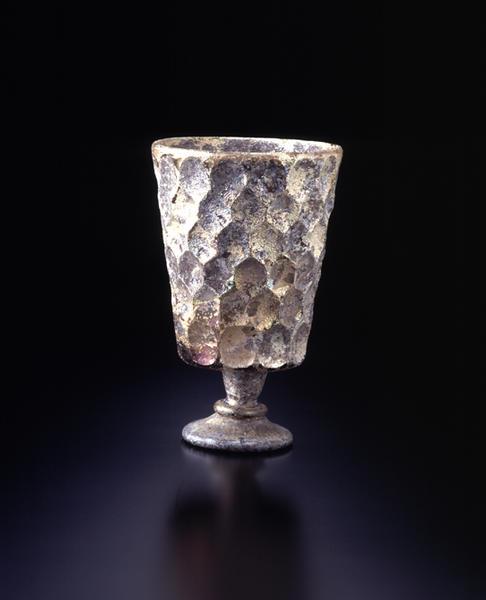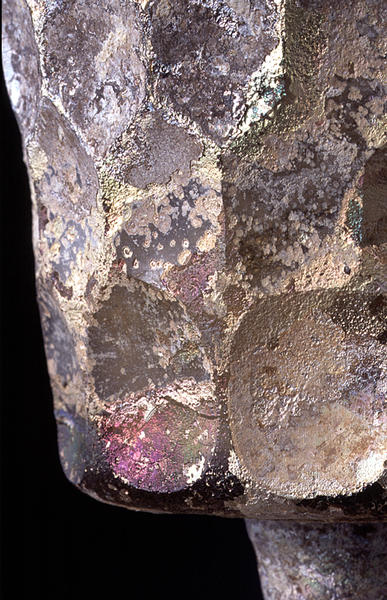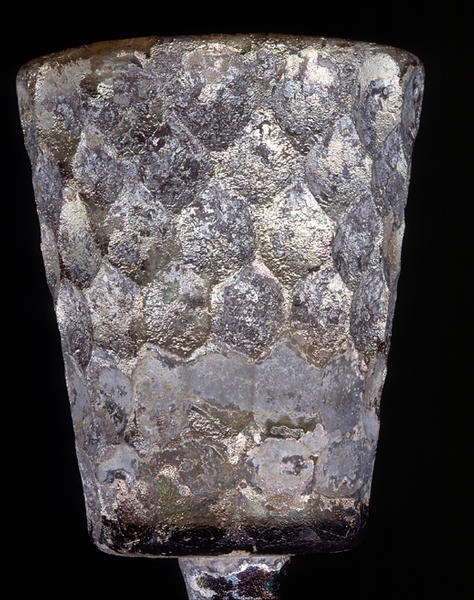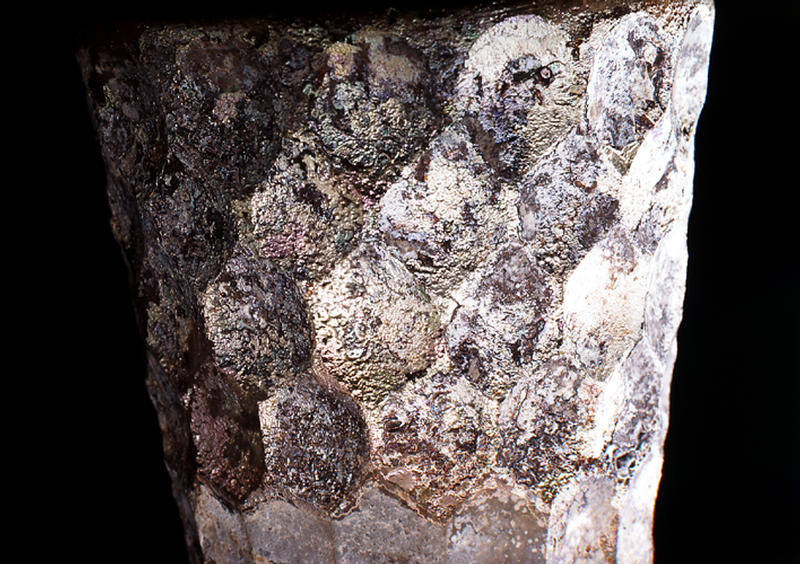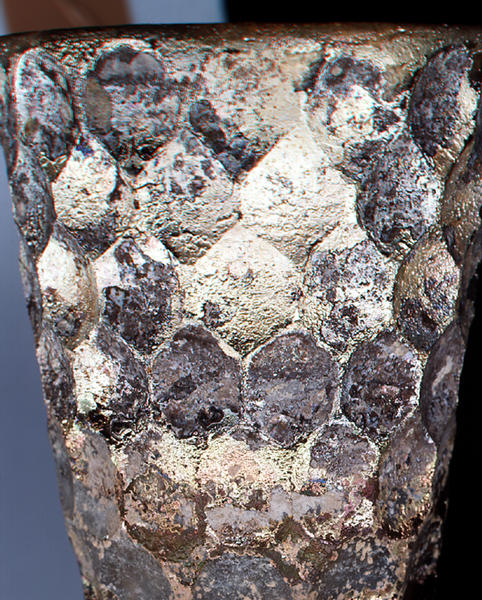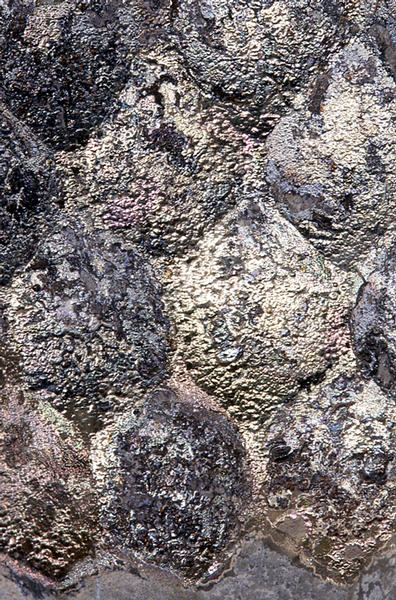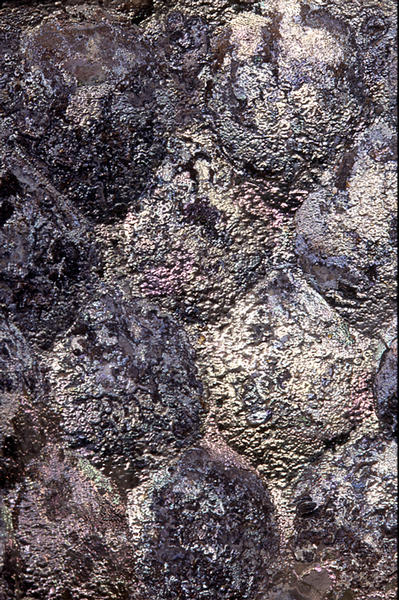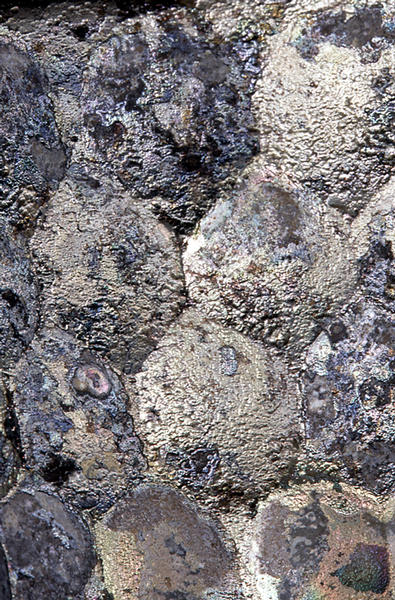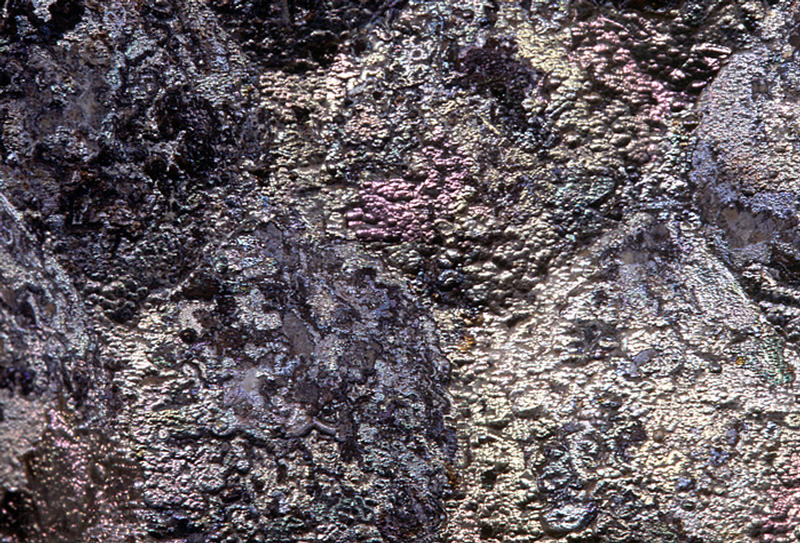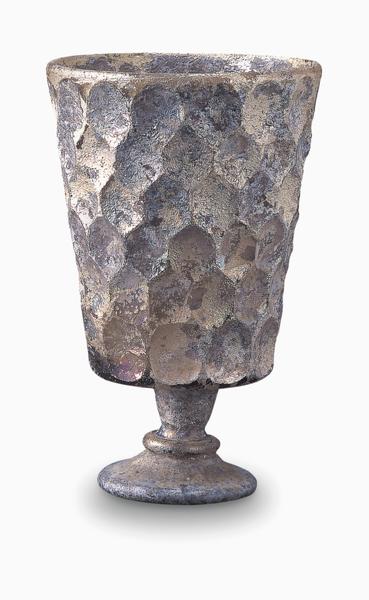Cut-glass Beaker
- Allegedly Iran
- Persia, Sassanid or early Islamic period
- 6th - 7th century
- Light reddish brown, light beige, colorless glass
- H-16.7 D-10
Catalogue Entry
This cut-glass stemmed beaker is decorated in a fashion common in the Eastern Roman Empire in the second and third centuries A.D. and in the Near East through the early Islamic period. A variety of Near Eastern glasses, having walls covered with contiguous cut facets, are found over a wide area from Scandinavia to Japan.1 The appearance of this type of faceted vessel, when unweathered, is impressive. As each facet mirrors the facet on the opposite wall, the form of the vessel dissolves into an intricate pattern of reflected light.
During the Sasanian period (A.D. 224-651) the use of faceted designs to decorate glass appears to have been particularly popular, and many vessels of this type have survived. However, the most common Sasanian shape is not a footed goblet or beaker but a hemispherical or open bowl.2 Examples of goblet feet are known from Sasanian levels at Kish and at Medain near Tello in Mesopotamia, but the glass beaker with a foot is more characteristic of the Islamic era.3 Fragments of feet and, more rarely, of a goblet cup having a flat base similar to this example, are known from Ctesiphon and Seleucia in Mesopotamia, and Susa in Iran, where they are dated to the early Islamic era (eighth-ninth century A.D.).4 The color of the Susa glasses ranges between opaque gray and brown.
Silver drinking cups resting on a pedestal foot were made throughout the Roman world from the first to the fifth century A.D.,5 and the high-footed chalice is a common form in early Christian church treasures of the sixth and seventh centuries in Syria.6 Representations of drinking cups resting on a pedestal foot also appear to the east, in the wall paintings of the sixth to seventh century at Balylyk Tepe in Uzbekistan.7 However, this form of silver drinking vessel is unknown in Sasanian Mesopotamia and Iran.
In all probability this handsome glass beaker is a work of the early Islamic period, although a late Sasanian date cannot be ruled out.
POH
l. Ekholm 1963, pp. 29ff.
2. Harper et al. 1978, p. 159, no. 82.
3. Langdon and Harden 1934, pp. 131-36, fig. 5, no. 16; Genouillac 1936, pl. 134.
4. Ctesiphon: unpublished, New York, Metropolitan Museum of Art 32.150.237; Seleucia: Negro Ponzi 1970-71, pp. 67-104, fig. 54, nos. 111-14; Susa: Kervran 1984, p.214, fig. 10.1-.3, fig. 11.
5. Strong 1966, p. 137, 187-88, pl. 54b.
6. Mango 1986.
7. Al'baum 1960, fig. 105.
Catalogue Entry
Blown and molded from almost colorless translucent glass, this cut-work decorated cup has a separately attached foot. The glass is 4 mm thick at its thickest parts. The cuts are in six ranks, with the upper five ranks of cuts made up of 15 cuts which circle the body, and the sixth rank made up of 11 cuts which circle the form. The foot is goblet-shaped and a cord of decorative glass circles the top of the foot. There is a pontil mark in the middle of the base. Such goblets made in Sasanian cut-glass technique are rare, and this powerful work is covered overall with an impressive gold-colored layer of iridescence.
